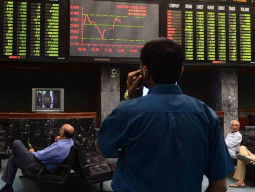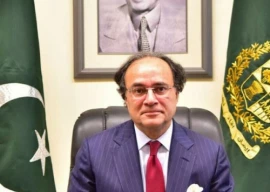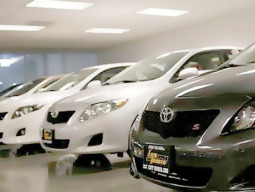
Since The Abraaj Group, which owns a majority stake along with original buyers, has not yet taken dividends of past four years’ profits, it is now keen to conclude the deal with Shanghai Electric at the earliest to take advantage of the generation-centric investment policy.
K-Electric invested only $100 million which was far less than the requirement and resulted in high technical and distribution losses, said PAC Chairman Syed Khursheed Shah. He was of the view that K-Electric has not made the required investment in the distribution sector.
PAC had called K-Electric management to the meeting for a detailed briefing.
Six workers electrocuted in 24 hours
Had the company made an investment in the transmission and distribution areas, its losses, which currently stand at 21.7%, would have been far lower, said Shah.
The permissible loss limit set by the power sector regulator is 15% including a 5.5% concession due to bad law and order situation, said Tariq Sadozai, Chairman of the National Electric Power Regulatory Authority (Nepra).
Sadozai said K-Electric was a private enterprise and it was expected to perform better than others. “But K-Electric is as good and bad as public sector power distribution companies are,” remarked Sadozai.
He said the private power utility made 70% of its investment in electricity generation that pushed its profits up because of process efficiency. In the new tariff, Nepra has ensured that efficiency benefits are passed on to the consumers instead of being kept by K-Electric, he said.
Sadozai said Rs24 billion in profit that the company earned last year was mainly because of gains in power generation.
Owing to a reduction in K-Electric’s multi-year tariff, he pointed out, the government would not have to give subsidy in future.
K-Electric CEO Tayyab Tareen admitted that system losses could have been further reduced by making required investments, but said the company still managed to bring it down from 36%, which was a big achievement.
Shanghai Electric deal
In October last year, The Abraaj Group and Shanghai Electric entered into an agreement for the sale of 66% stake to Chinese investors. The deal still awaits regulatory approval including the issuance of the national security clearance certificate, said Tareen.
He said The Abraaj Group was selling its 66% stake for $1.77 billion. Al-Jomaih Group and NIG of Kuwait are still owners of half of the 66% stake. This means half of the $1.77 billion worth of sale proceeds will go to the Al-Jomaih Group.
The CEO said since the government had privatised K-Electric, the shareholders had not taken dividends and reinvested the entire profit in the company. The return on equity for the investors was even less than 10%, he said.
Pakistan Peoples Party’s Syed Naveed Qamar said The Abraaj Group was not a philanthropist that was not keen to take dividends.
The Abraaj Group’s business model was based on realising benefits at the time of selling stake in a business concern, said Tareen. The Shanghai Electric transaction’s internal rate of return was less than 9%, he said.
Tareen said K-Electric’s investors duly met their only investment obligation under the Amended Implementation Agreement (AIA) signed in 2009 by injecting equity of $361 million into the company.
In addition, the company invested 22% more than the investment plan committed in the 2009 tariff petition - investments in all three functions were above the plan, he added.
Banks, businessmen urge NEPRA to increase K-Electric’s tariff
Through equity injection, debt and reinvestment of profits, K-Electric was able to achieve a turnaround with an investment of Rs158 billion across the value chain since 2009. These investments resulted in benefits to the consumers in the form of reduced load-shedding, enhanced capacity and improved system reliability, he claimed.
He said Karachi’s demand was expected to grow at a rate of 5.7% with peak demand anticipated to cross 4,500 megawatts by 2023. From 2017-23, K-Electric will make investment of Rs355 billion in power distribution, transmission and generation.
Compared to this, he said, Shanghai Electric plans to invest $9 billion or Rs932 billion in Karachi’s power infrastructure. It will invest Rs428 billion in generation, Rs305 billion in transmission and Rs199 billion in distribution.
Published in The Express Tribune, December 21st, 2017.
Like Business on Facebook, follow @TribuneBiz on Twitter to stay informed and join in the conversation.

1732623521-0/bitcoin-(1)1732623521-0-270x192.webp)
















COMMENTS
Comments are moderated and generally will be posted if they are on-topic and not abusive.
For more information, please see our Comments FAQ